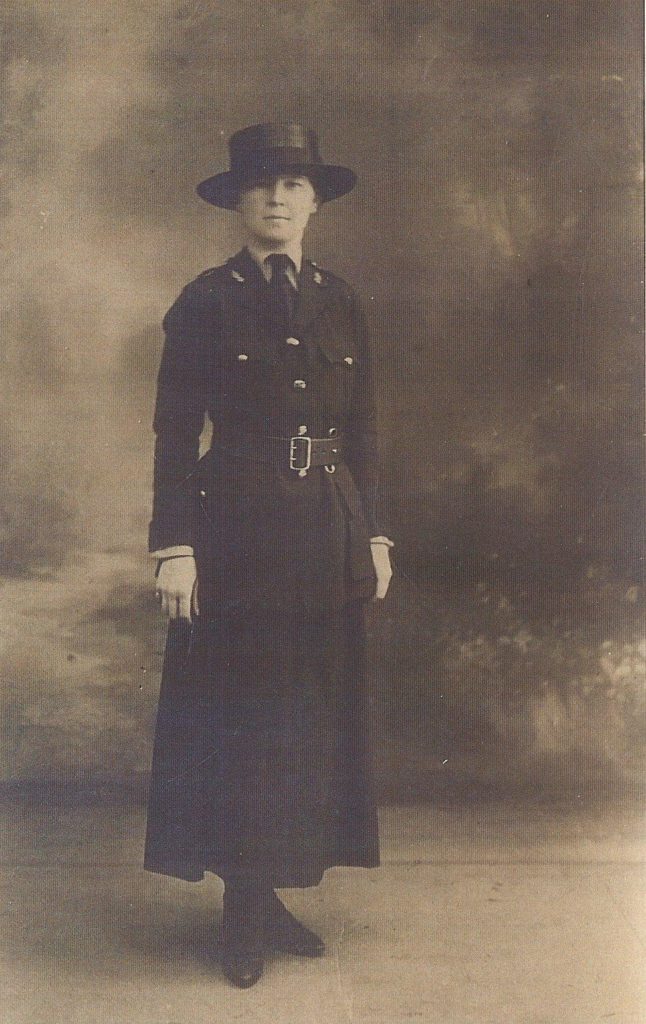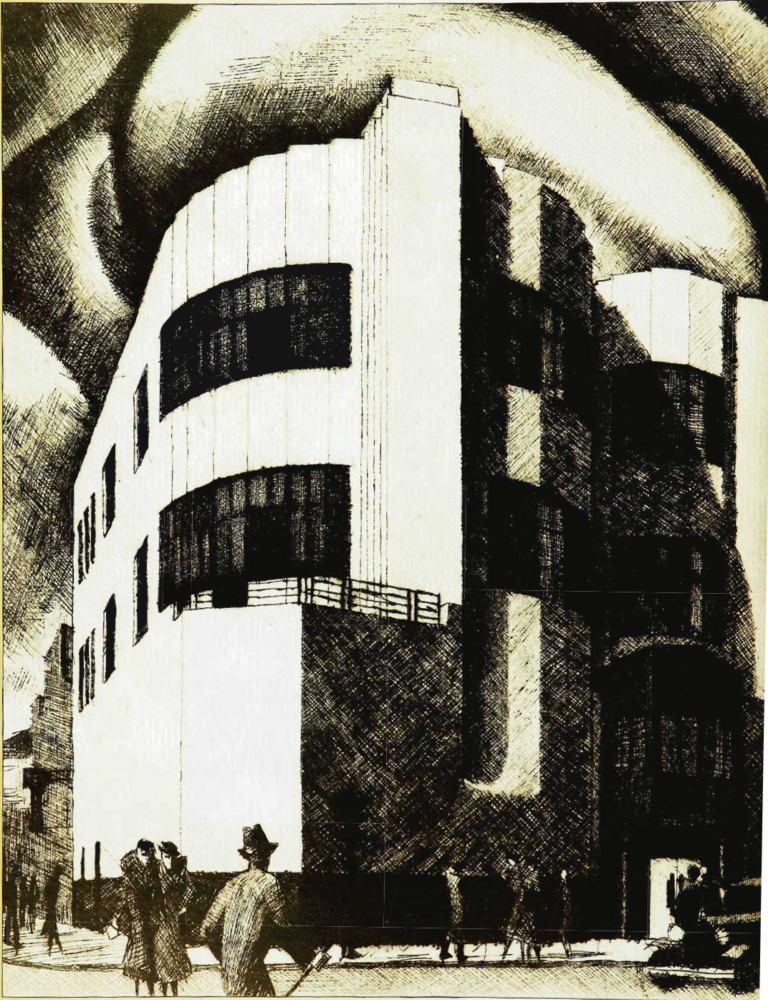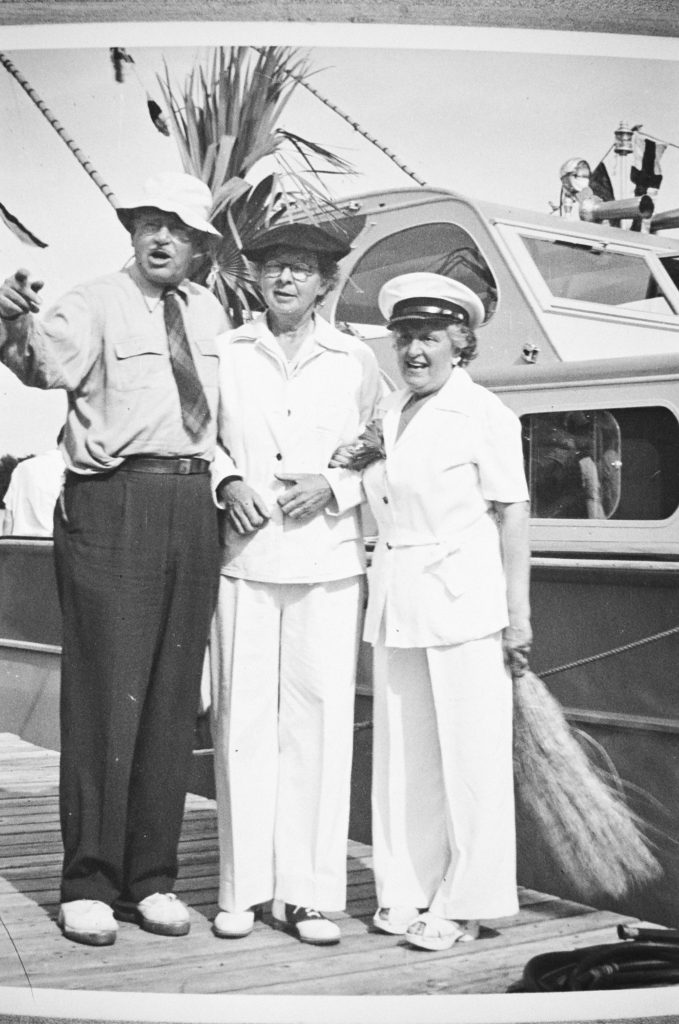Alice Marie O’Brien (September 1, 1891 – November 8, 1962) was a philanthropist, businesswoman, civic leader, World War I volunteer, conservationist and intrepid world traveler. As a young woman she learned auto mechanics and drove her roadster across the country at age 19. When she was 26, during World War I, she made use of her knowledge of cars as a volunteer in France, where she worked as a mechanic and treated wounded soldiers. After she returned, she became an advocate for social and political causes, including working for universal women’s suffrage. She was one of St. Paul’s most active and visible leaders in the 1930s and 1940s, leading and supporting organizations such as the Women’s City Club and Children’s Hospital.
Alice’s world travels included a visit to China and a 7,000 mile expedition through Africa, which was featured in a book by her fellow traveler, described below. As an early conservationist, she donated land in Marine on St. Croix to the state of Minnesota, which became the William O’Brien State Park, named after her father. Alice’s family had been successful in the lumber business in the St. Croix valley, and she was fortunate to have inherited wealth. She also became a successful business person and investor, which enabled her to support many philanthropic causes.
Service in World War I
A skilled driver and mechanic, in 1918 Alice volunteered as an American Fund French Wounded (AFFW) motor repair worker in France. Traveling with two friends, they transferred to the American Red Cross, where they performed a variety of duties at or near the war zone, helping the wounded and working in the canteen. Her letters to her family, which describe in detail the work they did, were published by her great niece, Nancy O’Brien Wagner, in the book Alice in France: The World War I Letters of Alice M. O’Brien. Nancy’s article “Red Cross Women in France During World War I” further describes the exploits of these brave women.
Travels
In the 1920’s (exact date unknown), Alice traveled to Peking, China, taking many photographs of the villages, tradesman, farms and countryside. She purchased Chinese paintings, sculptures, bronzes of superb quality. Several pieces are part of the permanent collection of the Minneapolis Institute of Arts.
In 1927, Alice embarked on an expedition to Africa, landing in Dakar, Senegal and then traveling up the Congo River and other areas, a trip of more than 7,000 miles in 5 months. She traveled in a party of five, including Grace Flandreau, who wrote Then I Saw the Congo, a detailed day-by-day account of the adventure. It was one of the first books in English about travel in that area of Africa. Another member of the group, Charles E. Bell, shot more than 28,000 feet of film, which eventually became a movie that was translated into 8 languages and distributed widely in 1930.
Click here for a closer look at the map of the journey.
Philanthropy
In the 1930s-1940’s, Alice focused on civic and philanthropic matters. She became president of the Women’s City Club and was instrumental in raising funds for the construction of its landmark building, located at 305 St. Peter St., St. Paul. Her nephew Thomond wrote an article about Alice’s role in the Women’s City Club, which was published by the Minnesota Historical Society.
She also spent considerable time and effort on behalf of the Children’s Hospital in St. Paul, which at the time was the only Children’s Hospital between Chicago and the West Coast. She served on the Board of Trustees and started the first Children’s Hospital Association to raise money for the free bed fund.
In 1945, Alice donated to the State of Minnesota 180 acres of rolling woodland just north of Marine on St. Croix, which is the oldest logging settlement in the state. She gave the land in memory of her father, creating the William O’Brien State Park, one of Minnesota’s most visited parks.
A winter resident of Captiva Island in Florida, Alice was concerned about the preservation of the island’s ecosystems. As a friend of J.N. “Ding” Darling, she helped fund the establishment of the J.N. Ding Darling National Wildlife Refuge.
She established the Alice M. O’Brien Foundation in 1951.
References
Books
Flandrau, Grace. Then I Saw the Congo. London, England: George G. Harrap & Company Ltd., 1939.
O’Brien Wagner, Nancy. Alice in France: The World War I Letters of Alice M. O’Brien. St. Paul, MN: Minnesota Historical Society Press, 2017.
Ray, Georgia. Grace Flandrau: Voice Interrupted. Roseville, MN: Edinborough Press, 2007.
Voices from the past: true tales of old Captiva. Captiva Civic Association. Ft. Myers, FL: Sutherland Pub., c. 1984
Women of Minnesota: Selected Biographical Essays. Edited by Barbara Stuhler and Gretchen Kreuter. St. Paul, MN: Minnesota Historical Society Press, 1998.
Articles
“Alice M. O’Brien and the Women’s City Club of St. Paul,” by Thomond O’Brien, Minnesota History Magazine, Summer 1994.
“In Search of the Real Grace Flandrau,” by Georgia Ray, Minnesota History Magazine, Summer 1999.
“Red Cross Women in France During World War I,” by Nancy Wagner O’Brien, Minnesota History Magazine, Spring 2012.
“Stepping Up to Help,” by Jessica Kohen, Minnesota Good Age, April 3, 2017.





